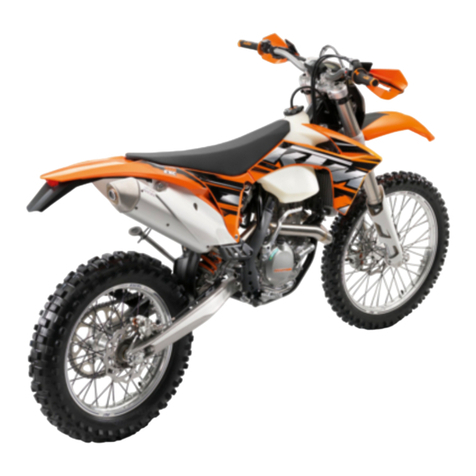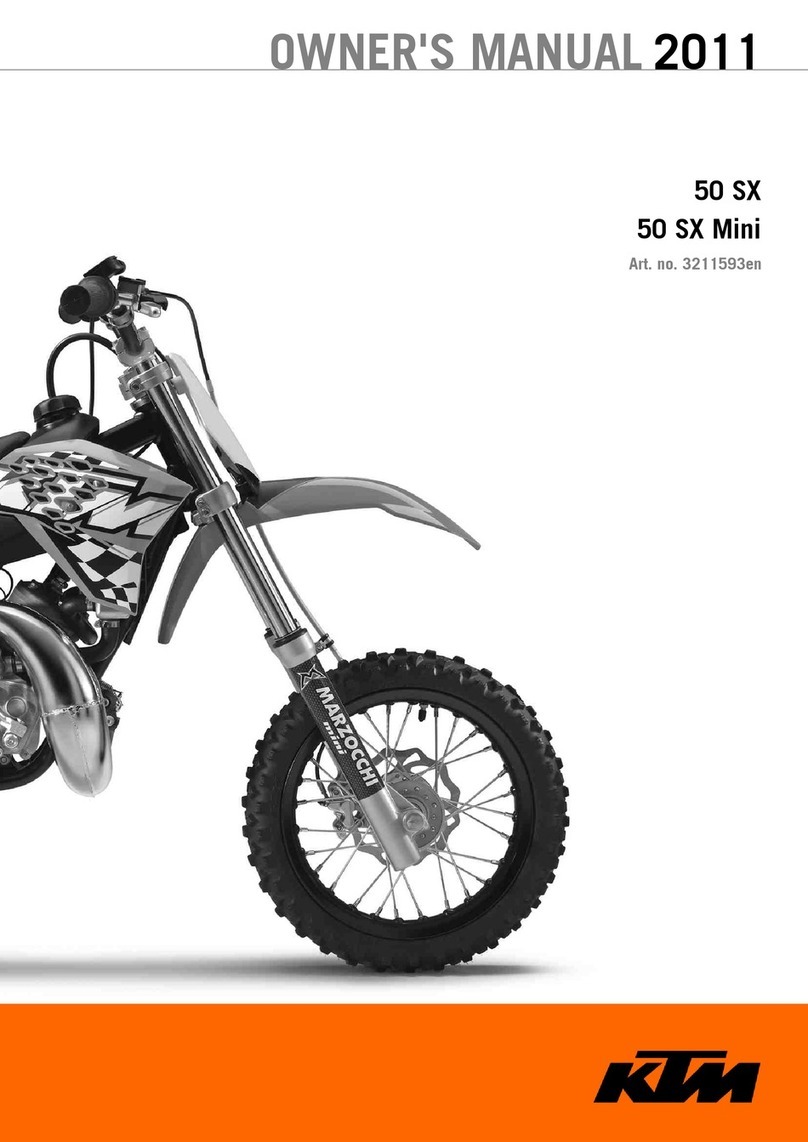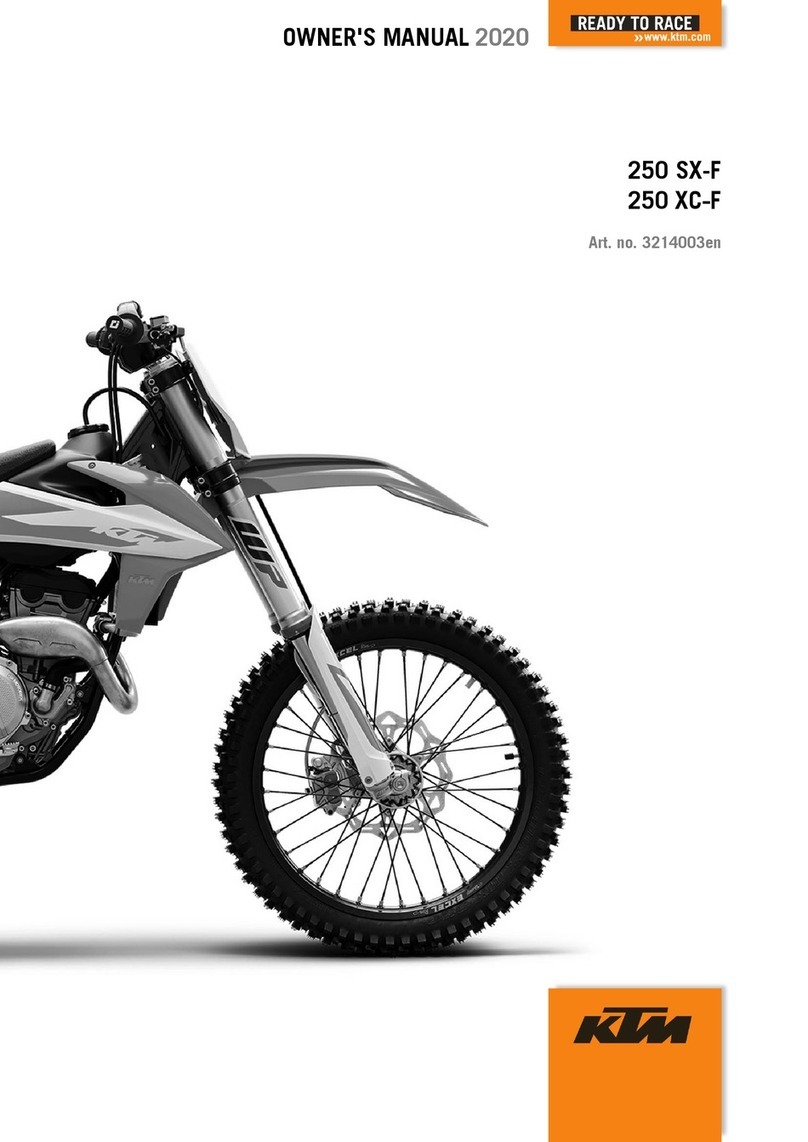KTM 790 DUKE 2018 Manual
Other KTM Motorcycle manuals
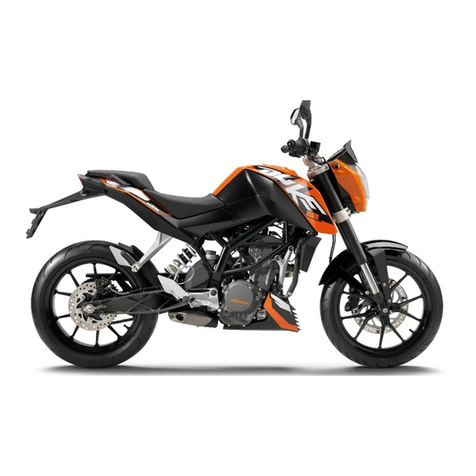
KTM
KTM 125 DUKE EU User manual

KTM
KTM 250 SX 2010 User manual
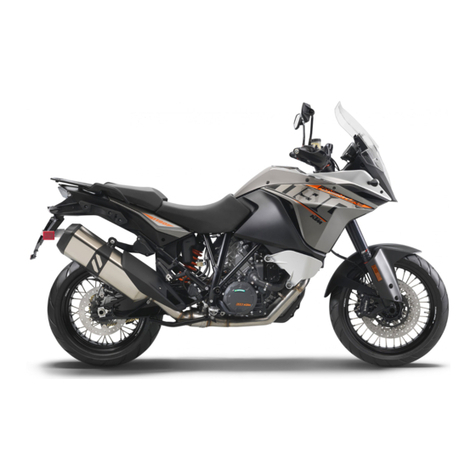
KTM
KTM 1190 Adventure 2016 User manual
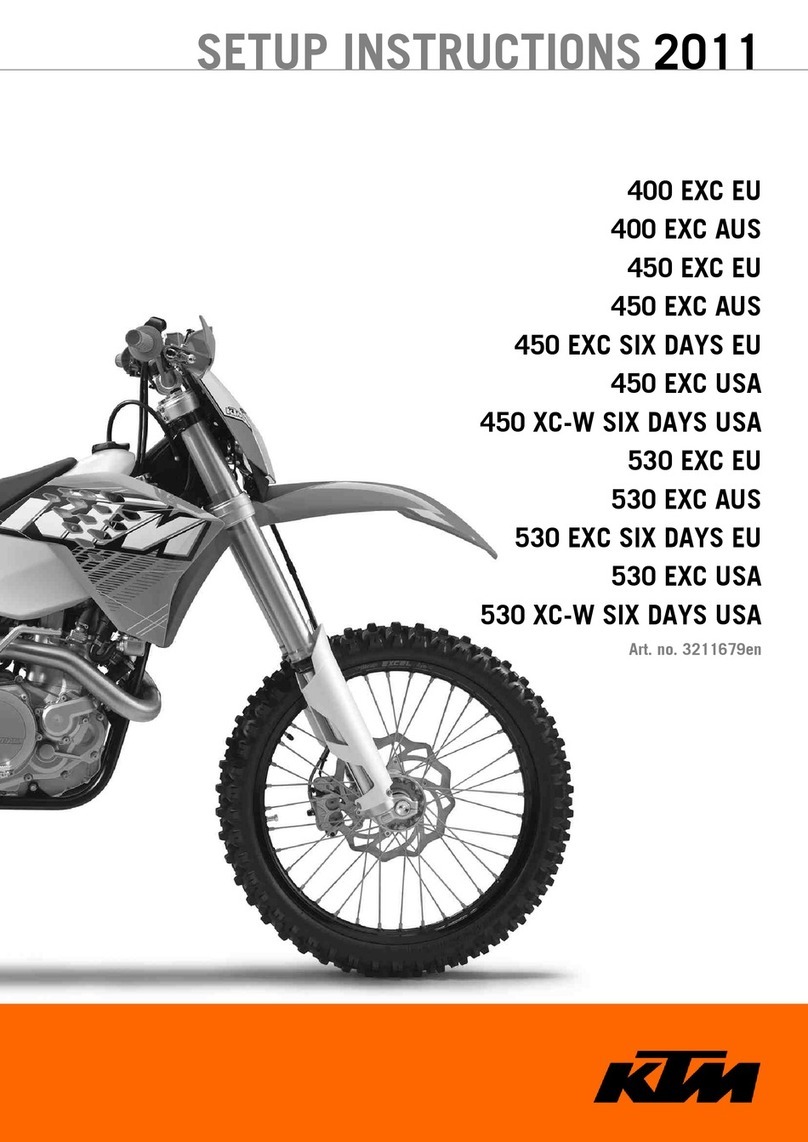
KTM
KTM 400 EXC EU 2011 Manual
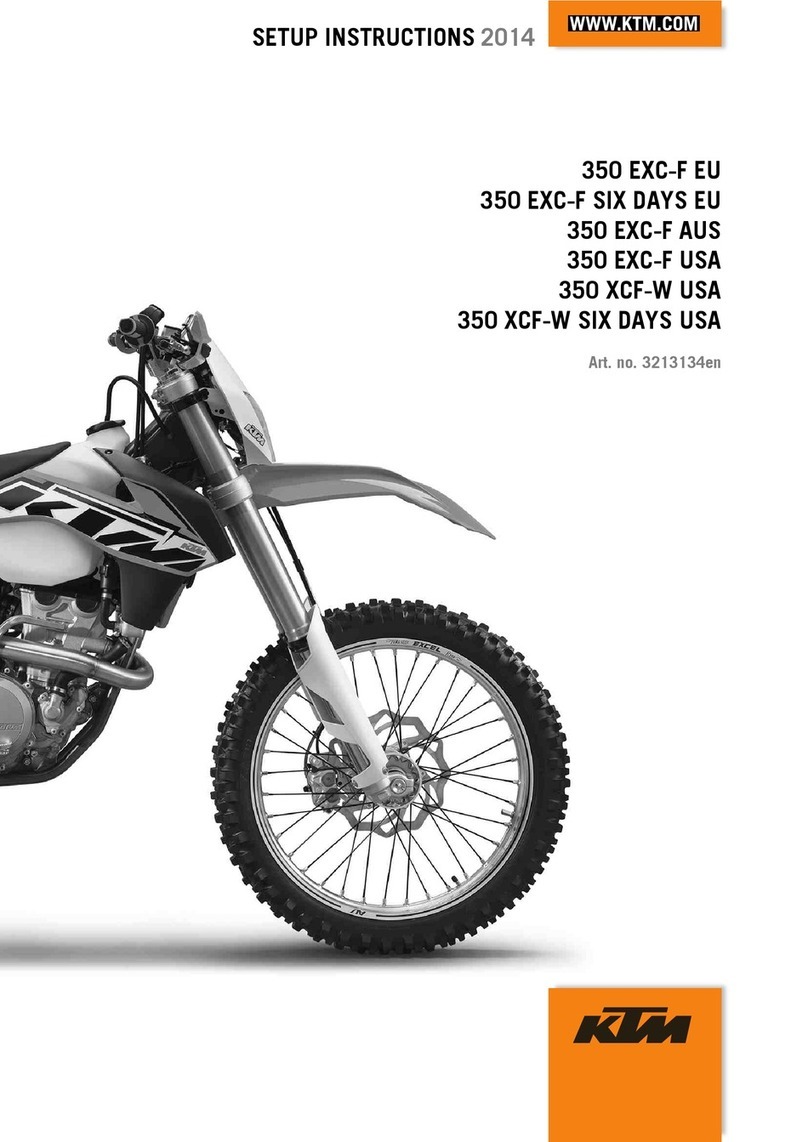
KTM
KTM 350 EXC-F EU 2014 Manual
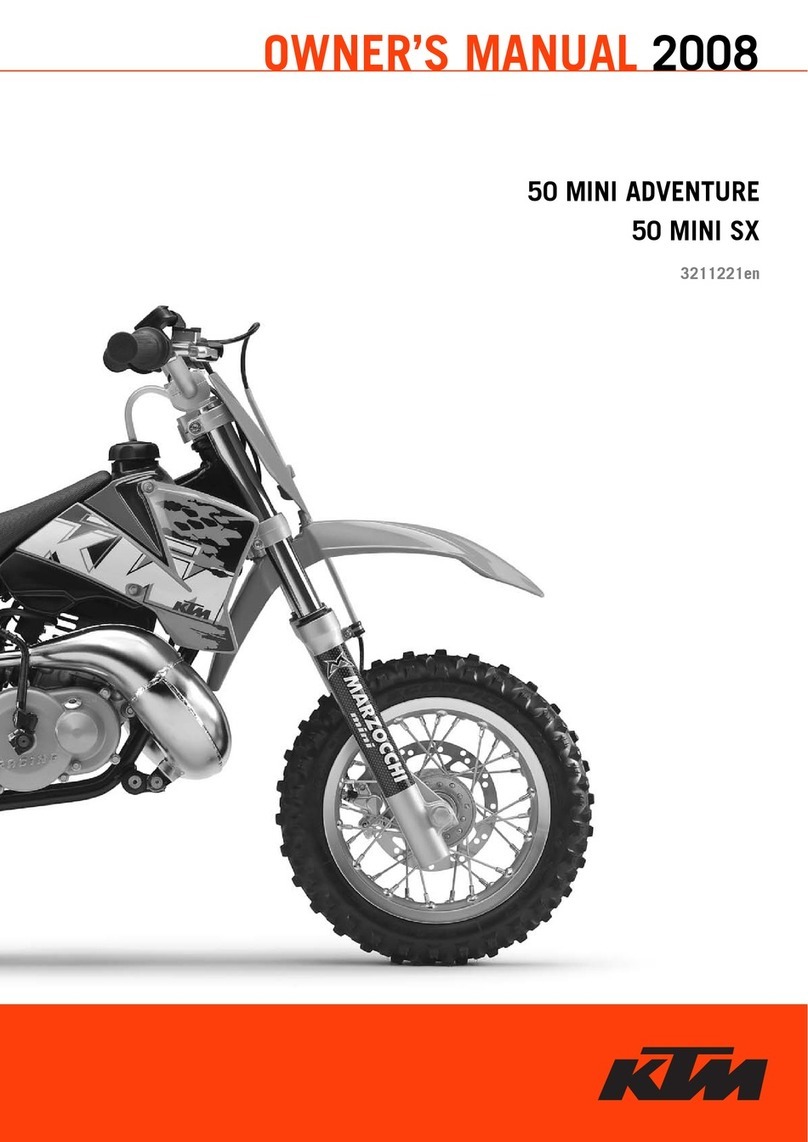
KTM
KTM 50 MINI ADVENTURE User manual

KTM
KTM 350 EXC-F 2017 User manual
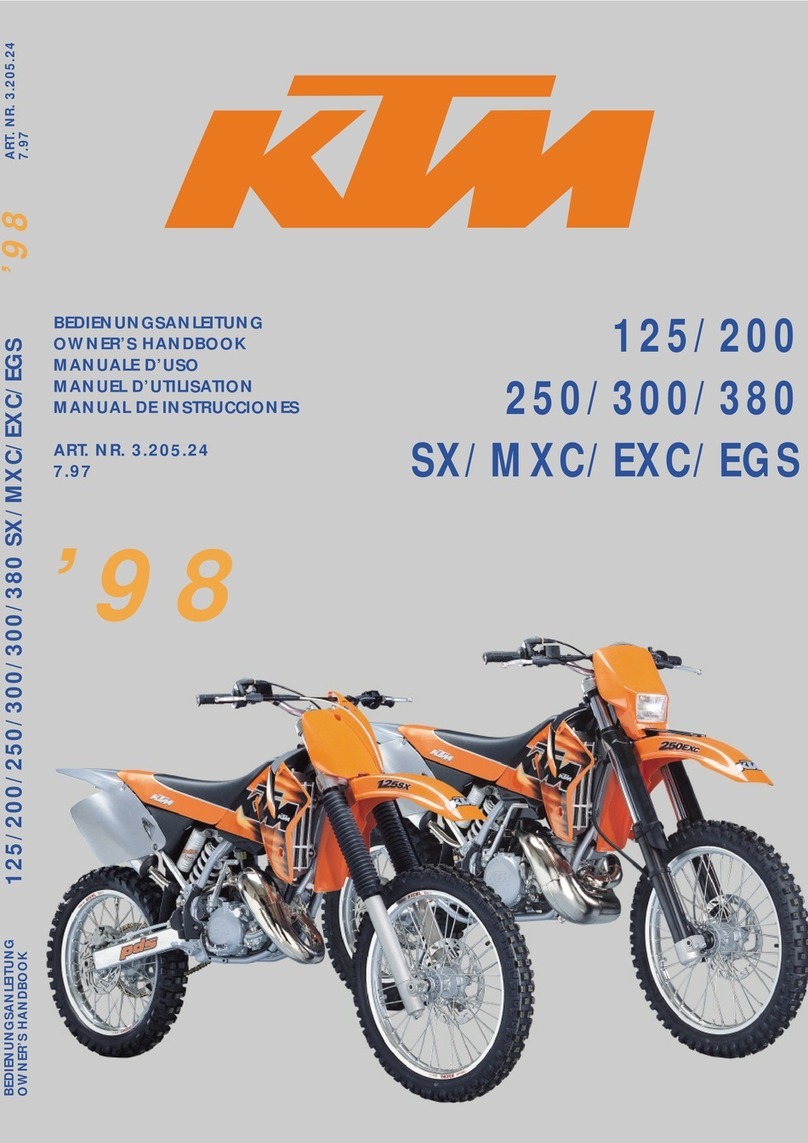
KTM
KTM 1998 125sx User manual
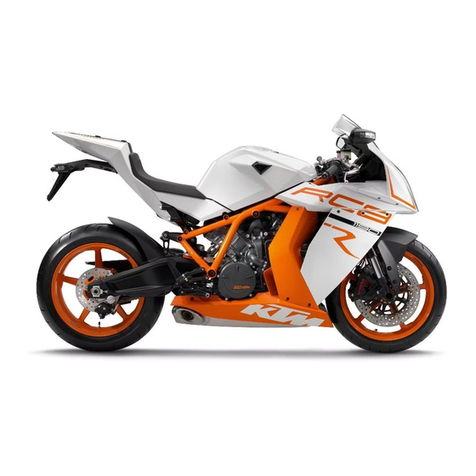
KTM
KTM 2013 1190 RC8 R JP User manual
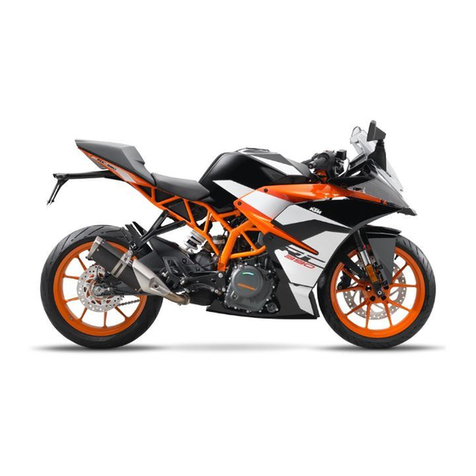
KTM
KTM RC 390 2018 User manual
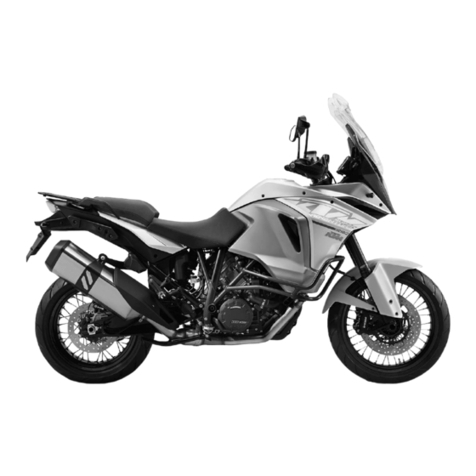
KTM
KTM Super Adventure 2016 Manual
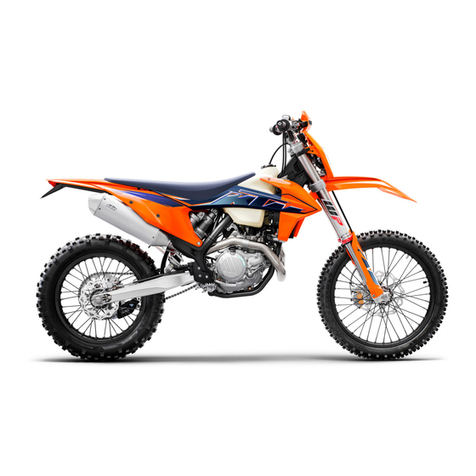
KTM
KTM 450 EXC SIX DAYS Manual
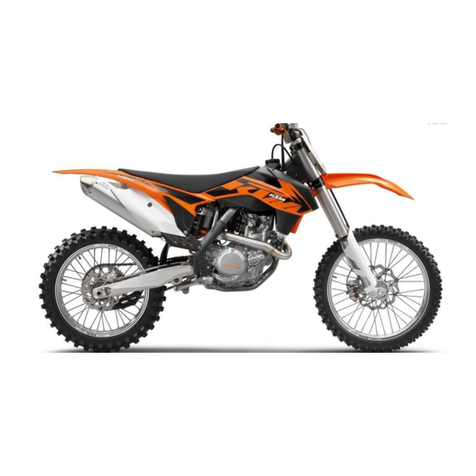
KTM
KTM 450 SX-F User manual
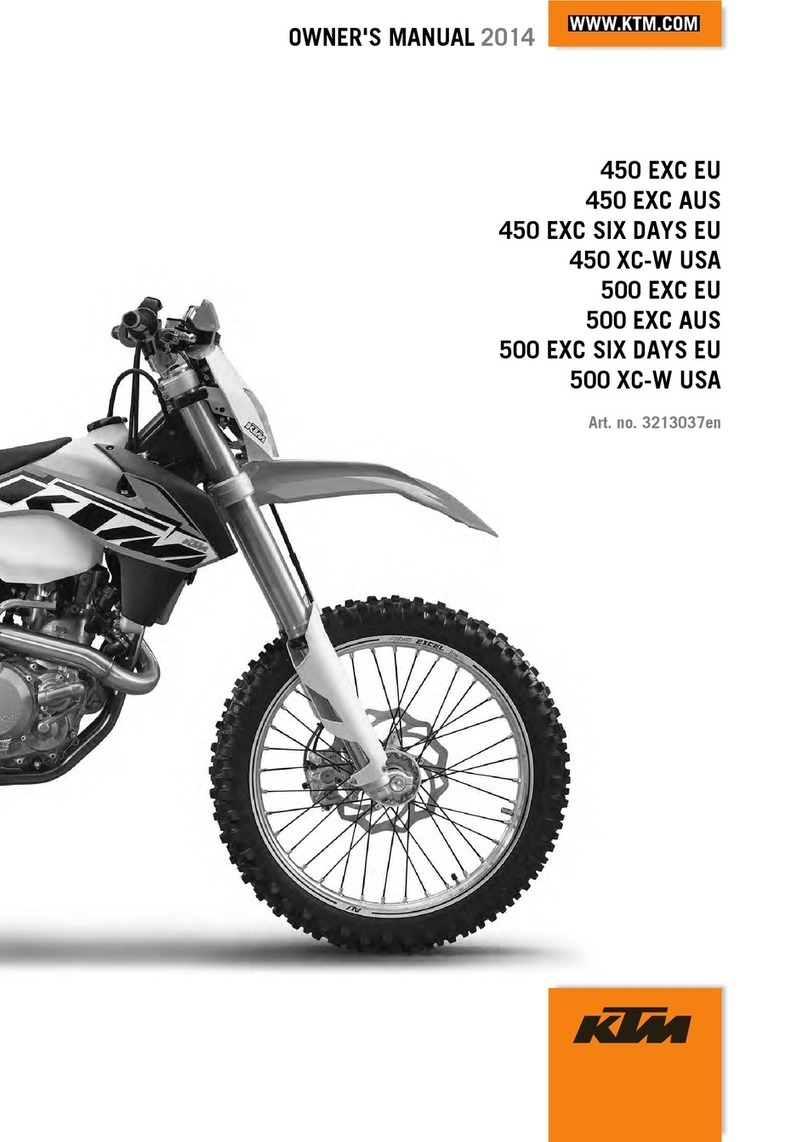
KTM
KTM 450 EXC EU User manual
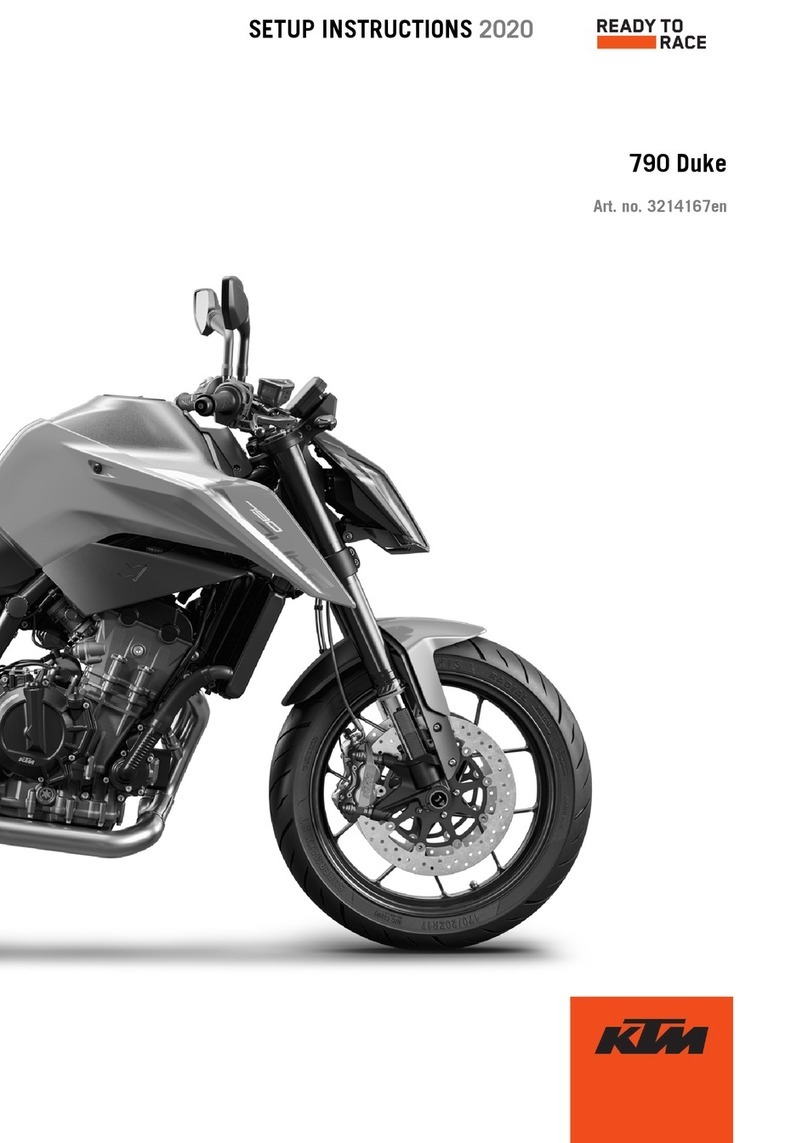
KTM
KTM 790 Duke 2020 Manual
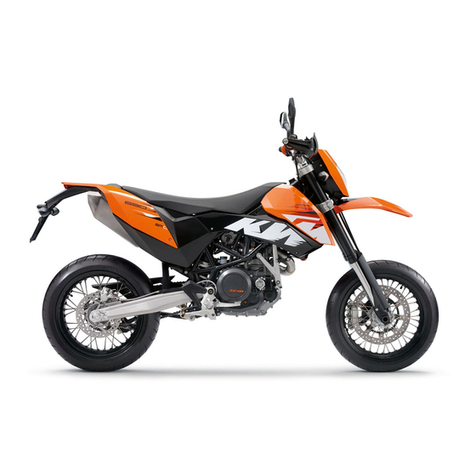
KTM
KTM 690 SMC EU User manual
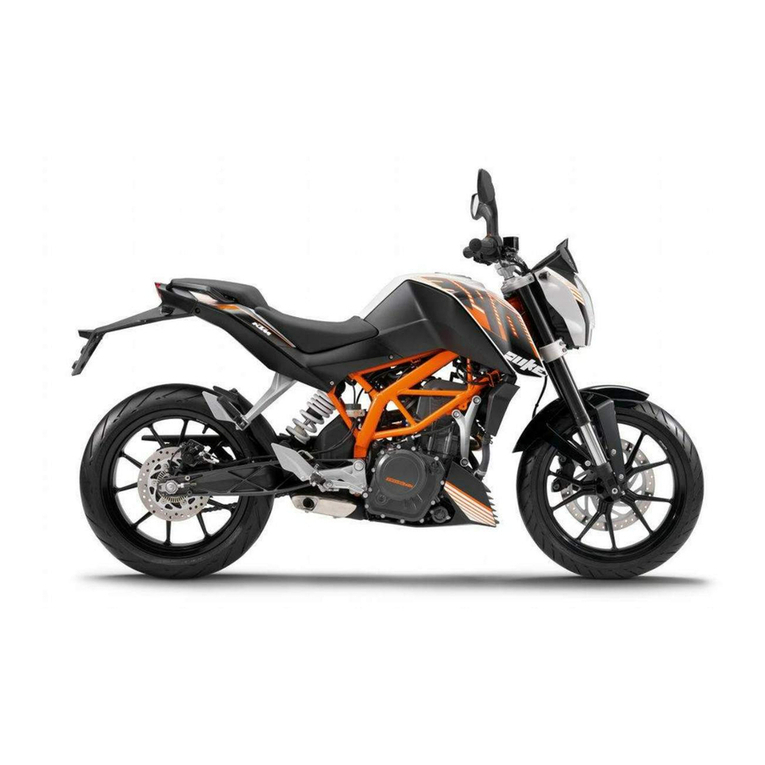
KTM
KTM 390 Duke EU 2013 Operating instructions
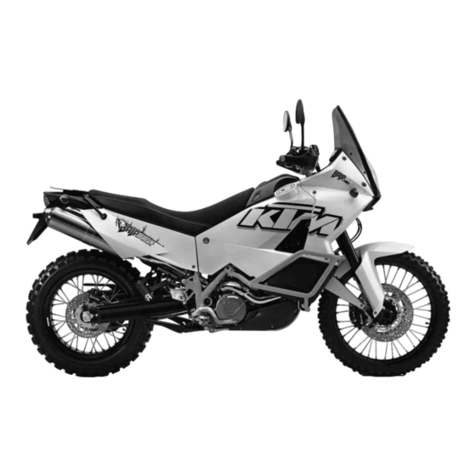
KTM
KTM 990 Adventure Baja User manual
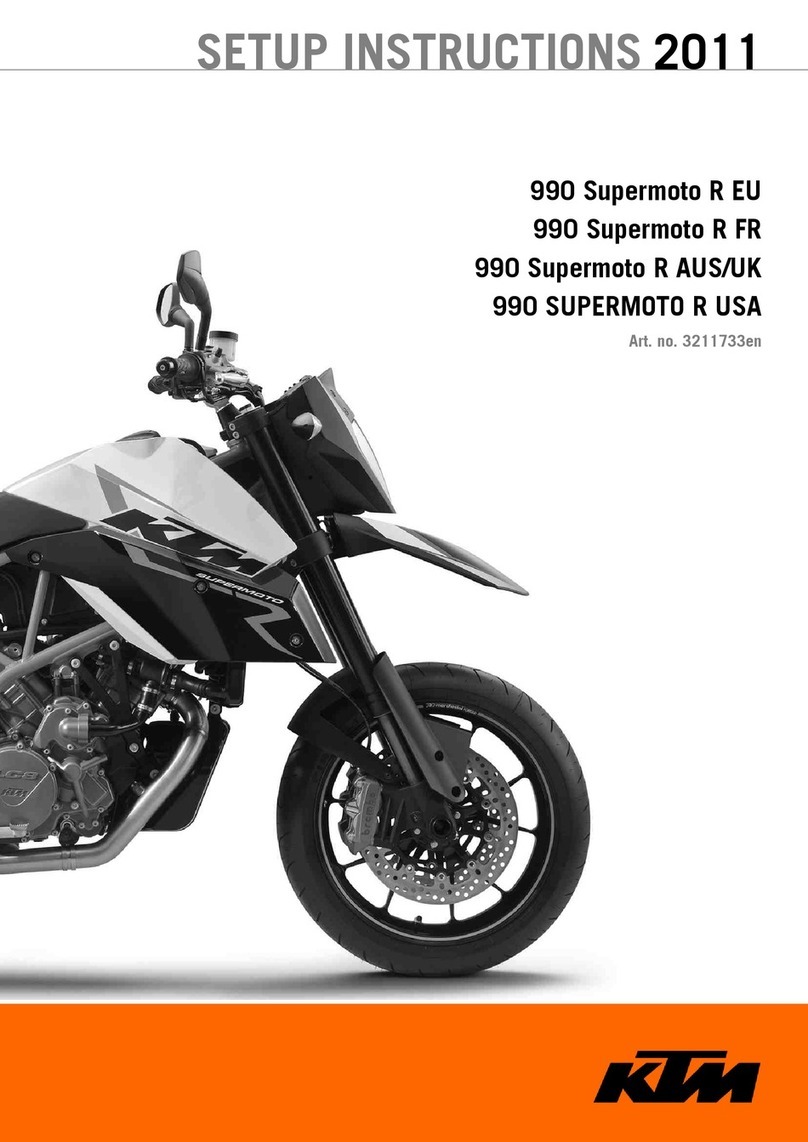
KTM
KTM 990 Supermoto R 2011 Manual

KTM
KTM 690 Duke 2019 Manual
Popular Motorcycle manuals by other brands

MV Agusta
MV Agusta Brutale 675 Workshop manual

APRILIA
APRILIA RSV MILLE - PART 1 1999 User manual content

Royal Enfield
Royal Enfield Himalayan 2018 owner's manual

SSR Motorsports
SSR Motorsports Lazer5 owner's manual

MOTO GUZZI
MOTO GUZZI 2005 Griso 1100 Use and maintenance book

Beta Motorcycles
Beta Motorcycles XTRAINER 250 2T EUROPA 2022 manual
